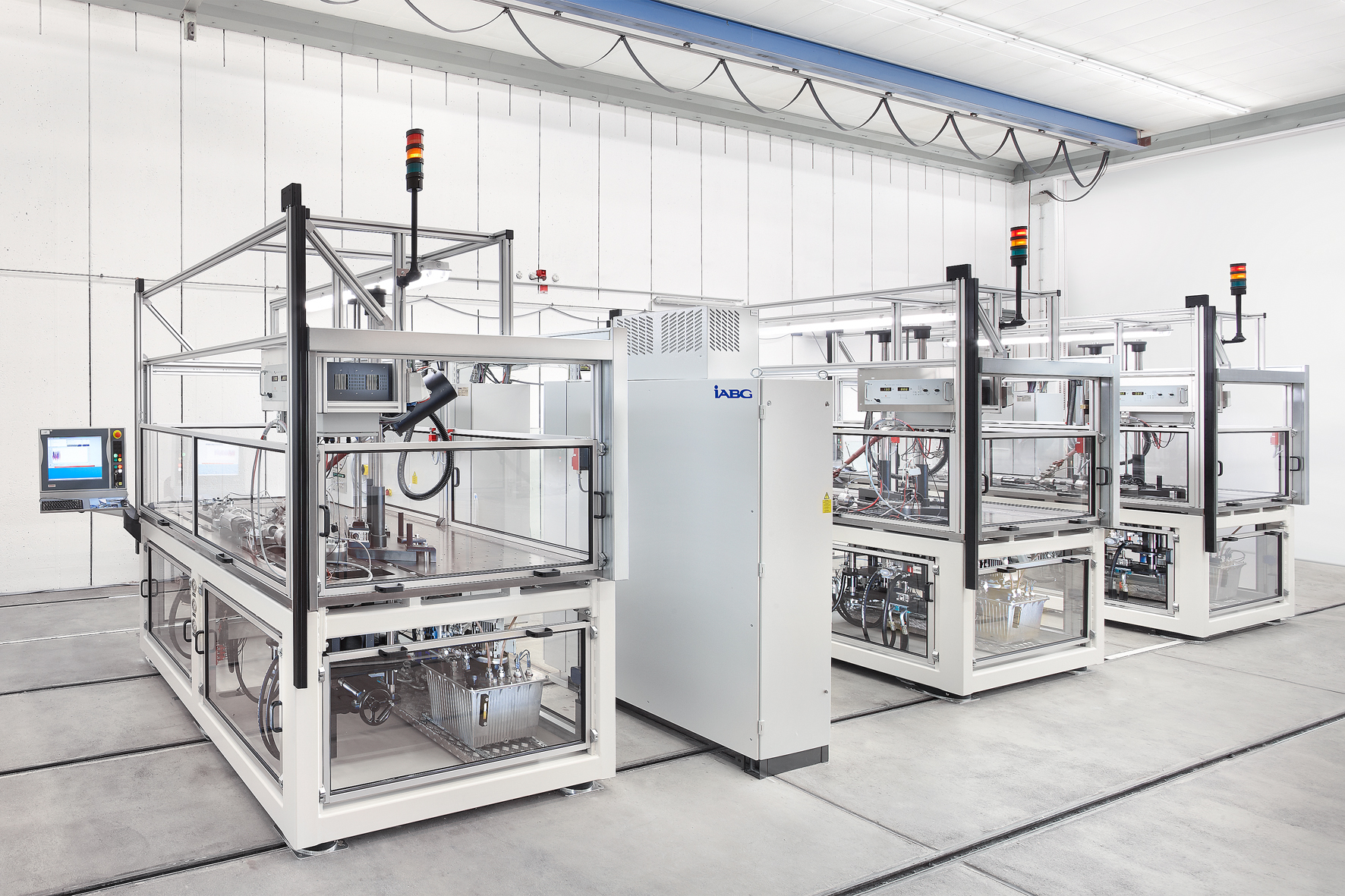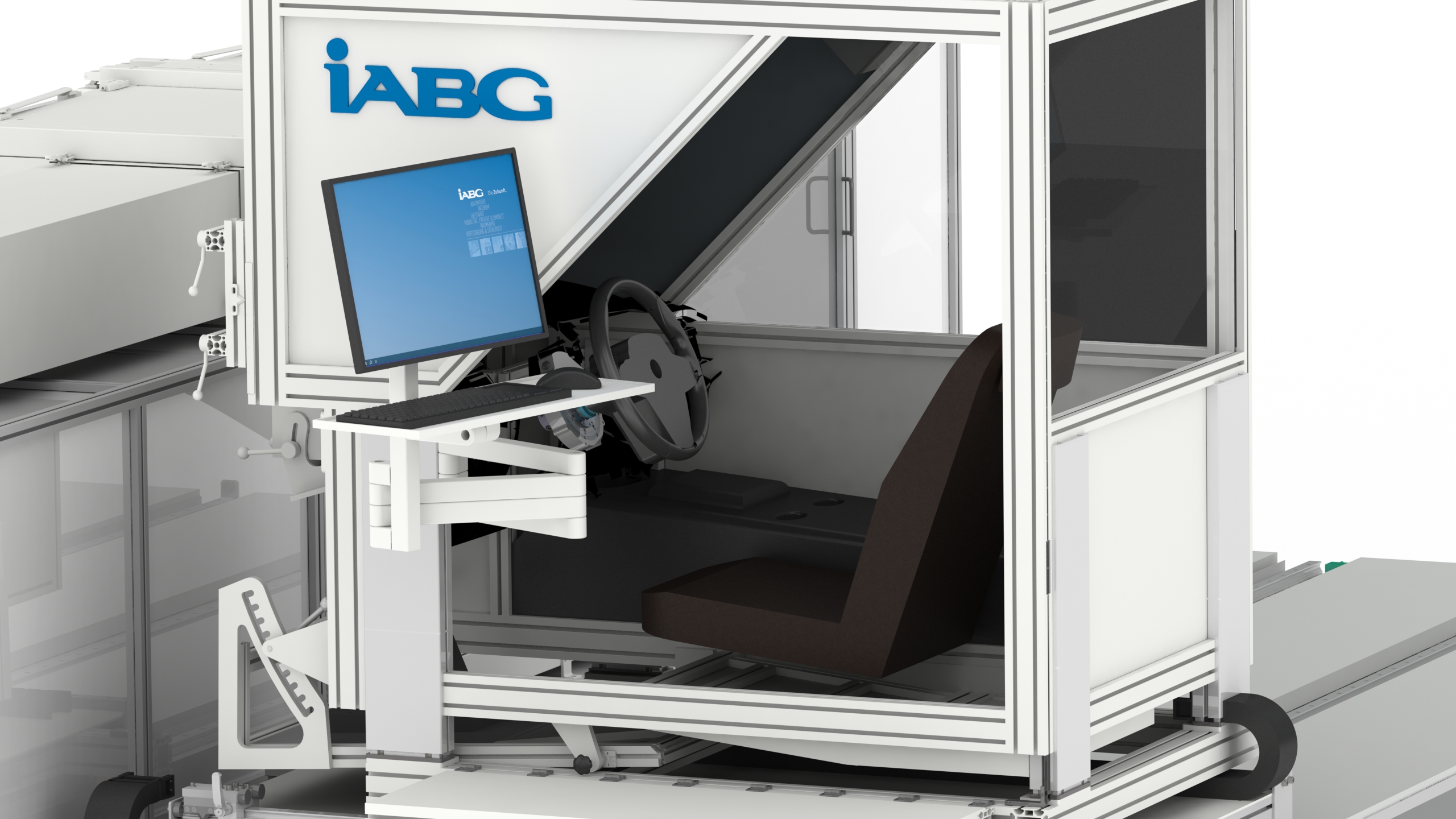Steering test benches
We plan and implement your steering test bench.
We design and realize steering in the loop test benches for front and rear axle steering systems as well as steer-by-wire systems. For individual requirements and boundary conditions, we develop customer specific designed solutions including high performing actuators with individual customized hardware and software solutions.
Benefit from the performance of our high performance electric direct drives and linear drives, proven solutions for fast and ergonomic set-up and customized automation solutions that can be seamlessly integrated into your existing processes and toolchains.
Naturally, we also offer high-quality driver in the loop simulators, the possibility of virtual test drives and integrated solutions for environmental simulations for our test benches. You receive your turnkey steering test bench from a single source.
Typical areas of application for our steering test benches
The spectrum successful realized test rigs for well-known customers range from compact steering HIL in table-top design to endurance test benches and high-performance steering test benches with high-performance electric direct drives and virtual driving simulators. We also offer proven solutions for special tasks, such as endurance testing of steering gears under the influence of corrosive and abrasive media. There is a wide area of application for our EPS and steer-by-wire test benches.
Typical areas of application for our steering gear test benches
The spectrum successful realized test rigs for well-known customers range from compact steering HIL in table-top design to endurance test benches and high-performance steering test benches with high-performance electric direct drives and virtual driving simulators. We also offer proven solutions for special tasks, such as endurance testing of steering gears under the influence of corrosive and abrasive media. There is a wide area of application for our EPS and steer-by-wire test benches.
Endurance test benches for steering systems
Our test benches for endurance testing are designed for testing and safeguarding the service life cycle of electromechanical steering systems under environmental influences. For this purpose, both operating load tests and standardized tests with virtual profiles are frequently used.

- Validation of functions and performance data over the service life
- Safeguarding operational stability
- Quality assurance
- Simulation and investigation of wear mechanisms under corrosive or abrasive environmental influences
Functional test benches for steering systems
Our steering test benches for endurance testing are designed for testing and validating the service life of electromechanical steering systems under environmental influences. For this purpose, we often use both operating load post-run tests and standardised tests with synthetic setpoint profiles.
- Functional testing of steering systems
- Determination of steering characteristics, e.g. steering support characteristics, steering force and efficiency
- Analyzing the steering characteristics and control quality with the HiL
- Simulation and validation of behavior in fault scenarios
- Highly automated release tests

Development test benches for steering systems
Our highly dynamic development test benches offer additional functionalities for the development, optimisation and validation of electromechanical steering systems.

- Testing of functions
- Evaluation of steering characteristics such as friction force tests, availability analyses, parking maneuvers and energy consumption
- Optimization of dynamic steering characteristics and control quality with the HiL
- Highly automated virtual driving and release tests
- Simulation and validation of behavior in fault scenarios
- Real-time tracking tests
- Quality assurance
(Human-) Driver-in-the-Loop Test Benches
Adding a driver-in-the-loop simulator to high dynamic steering test benches enables your developers and test drivers to evaluate and optimize the performance of a steering system in a virtual vehicle under reproducible conditions. As the forces and movements have to be reproduced dynamically and precisely for hybrid simulations, we use high dynamic electric linear drives with optimized synchronization behavior in our high-performance steering test benches. Of course, you can quickly and easily switch between automated tests and the driver-in-the-loop simulator in our function and development test benches for steering systems.

- Characterisation tests
- Evaluation and optimization of dynamic characteristics and control quality in the virtual environment
- Evaluation and optimization of the steering
- Test in the virtual environment
- Quality assurance